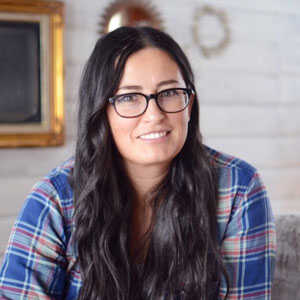By Noni Henderson
Driving along Casperville Road, you may notice the eye-catching memorabilia on display and wonder what exactly you are seeing. On this back road is a unique treasure trove of antiques, each with a story full of memories, history, and knowledge of our incredible valley, you likely won’t find anywhere else.
It was a gusty, freezing spring morning when I stopped at John Besendorfer’s Casperville Road Museum, as he calls it. I had dressed warmly, knowing that once we started the tour, there would be so much to see and talk about that I wouldn’t want to be distracted by the chill. In the few hours I was there, I heard a lot of fascinating details; I would have needed days to hear all the stories and history John is so generous to share.
John was born and raised on this family farm established in 1889 by his pioneer grandparents, who built the barn when the area was nothing but sagebrush. The farm was one of the many dairies located within Wasatch County, until 2018 when, after 130 plus years, they closed the doors. Now there are only two active dairies left in the valley. John remembers no running water, no inside bathroom, or electricity growing up as a young boy, but there was plenty of hard work to keep everyone busy. John and his wife Jane raised seven children on the farm and had been harmoniously married for 52 years until Jane’s passing two years ago.
John and Jane ran the farm together with Jane taking over while he taught school during the day. Over his 30-year teaching career in Midway and Heber, John taught 1,000 students and knew every person in the valley, which would have been 3,000 people at the time. With John’s knowledge of the valley’s residents and the couple’s love of history, it was only natural that their farm soon filled with antique artifacts. It was inevitable that John and Jane would heed the call to preserve history, and that is precisely what they have done. Although Jane no longer accompanies John while he leads the tour, one can’t help but feel her presence, as if she might suddenly appear to tell you the stories that only she knew of certain items.
The museum’s collection began with wooden wagon wheels from a family inheritance. Fifty years later, there are enough artifacts to fill eight to ten buildings. One of their more significant projects was a pioneer home that was carefully transported from Charleston using railroad jacks and a semi-trailer. Their collections are impressive and have been added to by way of yard sales, estate sales, and anything for sale that caught their attention, along with various generous donations.
As we walked and talked, John happily told the stories behind each item. There were stories of guns and swords found locally, swans, sleds and bottles, and a replica of a fire engine that he helped build. Stories about a “hair loomed” heirloom made from real hair, horse bones, and a collection of over 100 wrenches. If only the stamp collection and compilation of Heber high school graduating class pictures (probably the only one in the valley) could talk — what stories would they tell? You’ll find both in the “School House” building.
The list of artifacts goes on and on, with many holding special meaning. John’s favorite is his great grandfather’s Mormon Battalion uniform, sword, and cane that he inherited. Having come through both the Mexican War and the Black Hawk war, the artifacts are close to John’s heart and too valuable to be displayed publicly, but he still loves talking about their stories.
John’s family lives close by; his son lives next to him, and two other children live in the valley. His older brother lives on the other side of him with his own smaller collection of buildings and memorabilia.
Since the dairy is no longer there to draw in weekly visitors, John keeps busy every day and has had time to expand the museum by adding a few more themed rooms. Though they are a constant work in progress, he hopes to have the rooms ready for visitors this summer.
One of the most incredible things about John, besides his amazing memory, is his peaceful and sharing spirit. The museum came to be because he and Jane “felt the spirit of preservation, felt a spiritual prompting and power of guidance to do so.”
If you are fortunate to know someone from John’s generation, you know it’s always so interesting to talk about the experiences of their lifetime. John says it’s a privilege for him to have all this history for others to enjoy. To have them look at something and remember simpler times of their childhood and the sheer happiness it brings them. “This museum is to share, and if it can be an education, answer a question, enlighten about the past, then it has served its purpose — it’s multi-purpose.”
People like John and his family are our connections to the past. Their wealth of information keeps our community’s stories alive in our hearts. We need these connections, especially as the world changes with each passing day, and new residents move in and wonder about our rich history. Wasatch County is lucky to have the Casperville museum — go for a drive and take a tour. You’ll be hard-pressed to find someone as passionate or as knowledgeable about our entire valley’s history, families, and roots as John Besendorfer on Casperville Road.
Local’s Tip: Please call ahead for reservations 435-654-1459. Although not asked for, the museum would not decline donations.



